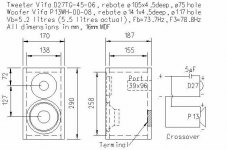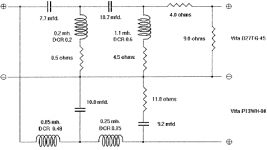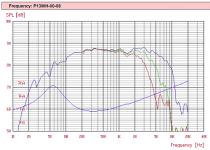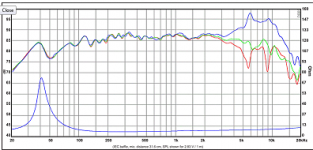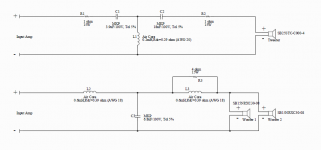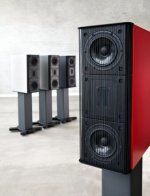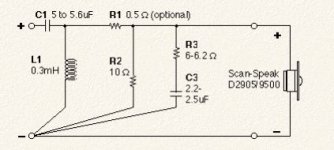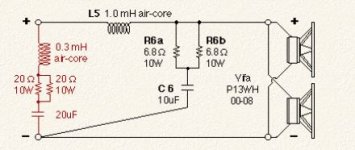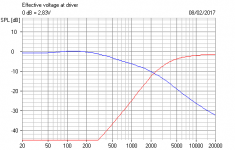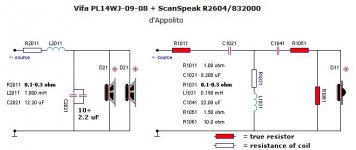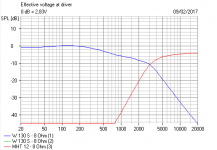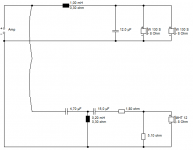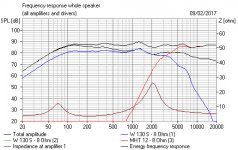Ice, Ice Baby.I'm building a pair of Ariels. I figure it's time I dragged my sorry **** into the nineties
Sent from my Nexus 6 using Tapatalk
It's all a bit of a mystery why Vifa should have discontinued one of their best ever drive units. 
A lovely flat 5" bass/mid driver.
But the modern afficionado can seek out some similar drivers:
Peerless HDS PPB 830860
The Peerless HDS PPB 830860 clearly does much the same thing.
A lovely flat 5" bass/mid driver.
But the modern afficionado can seek out some similar drivers:
Peerless HDS PPB 830860
The Peerless HDS PPB 830860 clearly does much the same thing.
I'm not sure they're discontinued:
https://www.wagneronline.com.au/vif...drivers-audiophile/audio-speakers-pa/3219/fl/
I think they're just made by Peerless now.
I've been using the P13WH for a good number of years in a pair of little ported 2-ways, along with the Vifa D27TG-35-06 tweeter. The design is from here: http://www.diyaudio.com/forums/multi-way/25590-diyaudio-reference-speaker-project-11.html#post308661
They're really lovely little monitors. They're always either on my desk or by my bed. Great detailed midrange - perfect for guitar and vocal, which is ~80 percent of the music I like. My only complaint is that they really are lacking in bass. The Ariel gives me another 6dB of bass thanks to the dual mid-woofers, plus the transmission line allegedly extends the bass down to fs...
Not to mention that they look really nice and they're a good woodworking project, and I'm in the mood for cutting some wood up.
Here's one of my little "diyAudio reference" speakers:
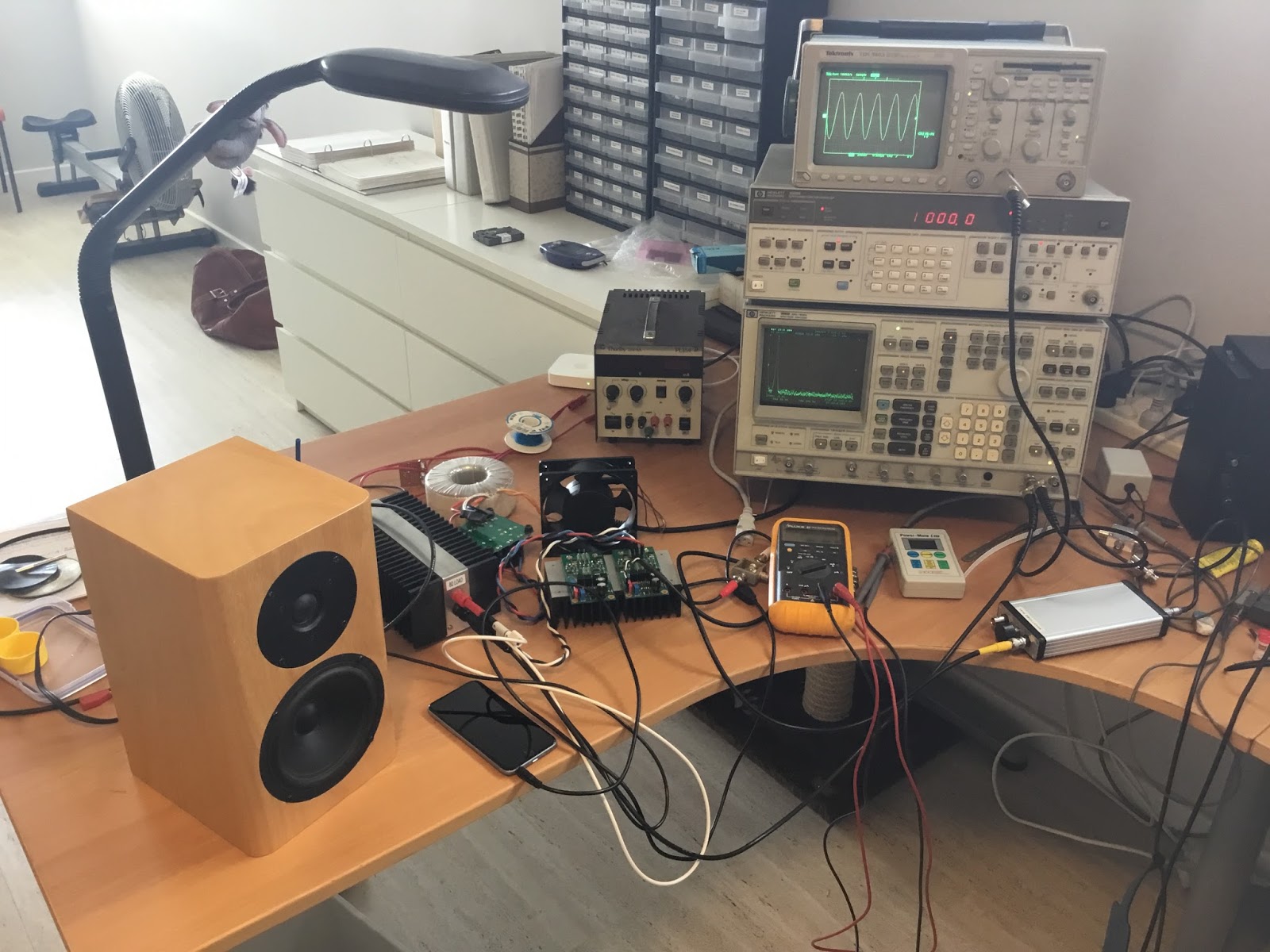
https://www.wagneronline.com.au/vif...drivers-audiophile/audio-speakers-pa/3219/fl/
I think they're just made by Peerless now.
I've been using the P13WH for a good number of years in a pair of little ported 2-ways, along with the Vifa D27TG-35-06 tweeter. The design is from here: http://www.diyaudio.com/forums/multi-way/25590-diyaudio-reference-speaker-project-11.html#post308661
They're really lovely little monitors. They're always either on my desk or by my bed. Great detailed midrange - perfect for guitar and vocal, which is ~80 percent of the music I like. My only complaint is that they really are lacking in bass. The Ariel gives me another 6dB of bass thanks to the dual mid-woofers, plus the transmission line allegedly extends the bass down to fs...
Not to mention that they look really nice and they're a good woodworking project, and I'm in the mood for cutting some wood up.
Here's one of my little "diyAudio reference" speakers:
I remember those and they were a lot lighter back then and yes, they are bass shy.
http://www.diyaudio.com/forums/multi-way/25590-diyaudio-reference-speaker-project-18.html#post2796418
For reference for other builders, a good alternative to the P13 is SB15MFC30-8 and even works in some of the xo's I used for the P13/D27 with some tweeter padding changes.
Have fun with your new build.
http://www.diyaudio.com/forums/multi-way/25590-diyaudio-reference-speaker-project-18.html#post2796418
For reference for other builders, a good alternative to the P13 is SB15MFC30-8 and even works in some of the xo's I used for the P13/D27 with some tweeter padding changes.
Have fun with your new build.
Last edited:
The SB 5" MFC polycone is a good idea, Rabbitz.
5" SB15MFC30-8 :: SB Acoustics
It's very similar to the 0.7mH Le Vifa, just a lower inductance at 0.14mH due to damping rings. I've been playing with some variants on the SB Acoustics Elok idea. It's third order essentially. You can put resistance in the bass shunt.
I'd guess if you put a 0.5mH coil in front of it, to put the inductance back and take out the HF hash, it would work with Lynn Olson's Ariel crossover.
Scott Blaier has harsh things to say about single cap crossovers:
But a 5" MTM is always an easy project, whatever your design goals.
5" SB15MFC30-8 :: SB Acoustics
It's very similar to the 0.7mH Le Vifa, just a lower inductance at 0.14mH due to damping rings. I've been playing with some variants on the SB Acoustics Elok idea. It's third order essentially. You can put resistance in the bass shunt.
I'd guess if you put a 0.5mH coil in front of it, to put the inductance back and take out the HF hash, it would work with Lynn Olson's Ariel crossover.
Scott Blaier has harsh things to say about single cap crossovers:
Remember, this is a price class where one cheap electrolytic capacitor passes for a crossover, cheap cone tweeters are the status quo, and 1/8 or 1/4 inch unbraced undamped plastic or wood boxes pass for an enclosure.
But a 5" MTM is always an easy project, whatever your design goals.
Attachments
suzyj,
I remember reading, years ago, about your take on the AEM5000. Are you going to drive them with that?
Yes, at least with a further refinement of it. See http://www.diyaudio.com/forums/solid-state/303060-even-order-distortion-symmetrical-amp.html
Through a bit of tweaking, mainly in substitution of VAS and second-stage transistors and working on the compensation network I've pushed THD down quite a bit from where I was when I first built it. 1KHz THD is now around 2-3ppm, and 10KHz is not too bad, at 10-20ppm.
My plan is to biamp with a 100W one for the woofers and a 50W one for the tweeters. I've got a bit of work to do to reverse engineer the Ariel crossover so I can do it actively.
There's not much to reverse engineering the Ariel electrical response. Interestingly, the impedance correction is not flat. This gives it a little bass boost and 2dB midrange presence at 2kHz. Which may be why it works better with valve amps.
If you put the Vifa DCR of 5.7R and Le of 0.7mH into an impedance correction calculator, you find that the bass shunt (and adjusted for parallel MTM) is just a near Zobel with half the theoretical capacitance. Which is what Lynn said it was.
Impedance Equalization (L-Pad) Circuit Designer / Calculator
If you put the Vifa DCR of 5.7R and Le of 0.7mH into an impedance correction calculator, you find that the bass shunt (and adjusted for parallel MTM) is just a near Zobel with half the theoretical capacitance. Which is what Lynn said it was.
Impedance Equalization (L-Pad) Circuit Designer / Calculator
Attachments
Scott Blaier has harsh things to say about single cap crossovers
I agree with him but they can have their place in speaker design. The single cap idea was suggested early in the thread as a starter but it eventually went to 3 variations of standard series xo's and a AR series xo.
"I remember reading, years ago, about your take on the AEM5000."
Oops, just checked your blog. It was the ETI5000 by David Tilbrook, which evolved to the AEM6000. Memory is a funny thing. Having said that; I see you are in Geraldton but weren't you in Sydney? I could be completely wrong here. If I'm right, they are world's apart, and not just geographically.
Oops, just checked your blog. It was the ETI5000 by David Tilbrook, which evolved to the AEM6000. Memory is a funny thing. Having said that; I see you are in Geraldton but weren't you in Sydney? I could be completely wrong here. If I'm right, they are world's apart, and not just geographically.
Indeed I was. This whole power amp thing started with a trip to the work library looking for an old ETI article. When I couldn't find it I instead found the AEM articles describing the AEM6000, which led me on a rather pleasant design exercise.
The power amp I built from that is still running in my loungeroom, and hasn't missed a beat.
We've relocated from Sydney to Geraldton for work, as out here is where all the action is. I'm rather liking Geraldton after Sydney. We didn't have a snowball's hope of owning property in Sydney, not on my wage. Here in Geraldton we're looking at acreages
The power amp I built from that is still running in my loungeroom, and hasn't missed a beat.
We've relocated from Sydney to Geraldton for work, as out here is where all the action is. I'm rather liking Geraldton after Sydney. We didn't have a snowball's hope of owning property in Sydney, not on my wage. Here in Geraldton we're looking at acreages
I think people make this stuff more complicated than it really is when they start talking about microphones and importing files.Thanks for the analysis of the crossover Steve. I'm interested what you used to model the drivers? Simply a series LR circuit or something more involved?
I started reading up on driver modelling last night and my eyes rapidly glazed over. I'm just a simple engineer...
I just used a similar 5" Le=0.6mH 8 ohm driver. The Visaton W130S, as it goes.
Boxsim is a very good simulator that an ordinary human being can get good results out of quickly:
Downloads
Import a similar project like this Couplet Light MTM into projekte folder, and you're in the right ball park already:
https://boxsim-db.de/couplet-light/
We don't have to reinvent the wheel in established territory like 5" MTM. It's easy, because 5" drivers are flat. 3kHz crossover.
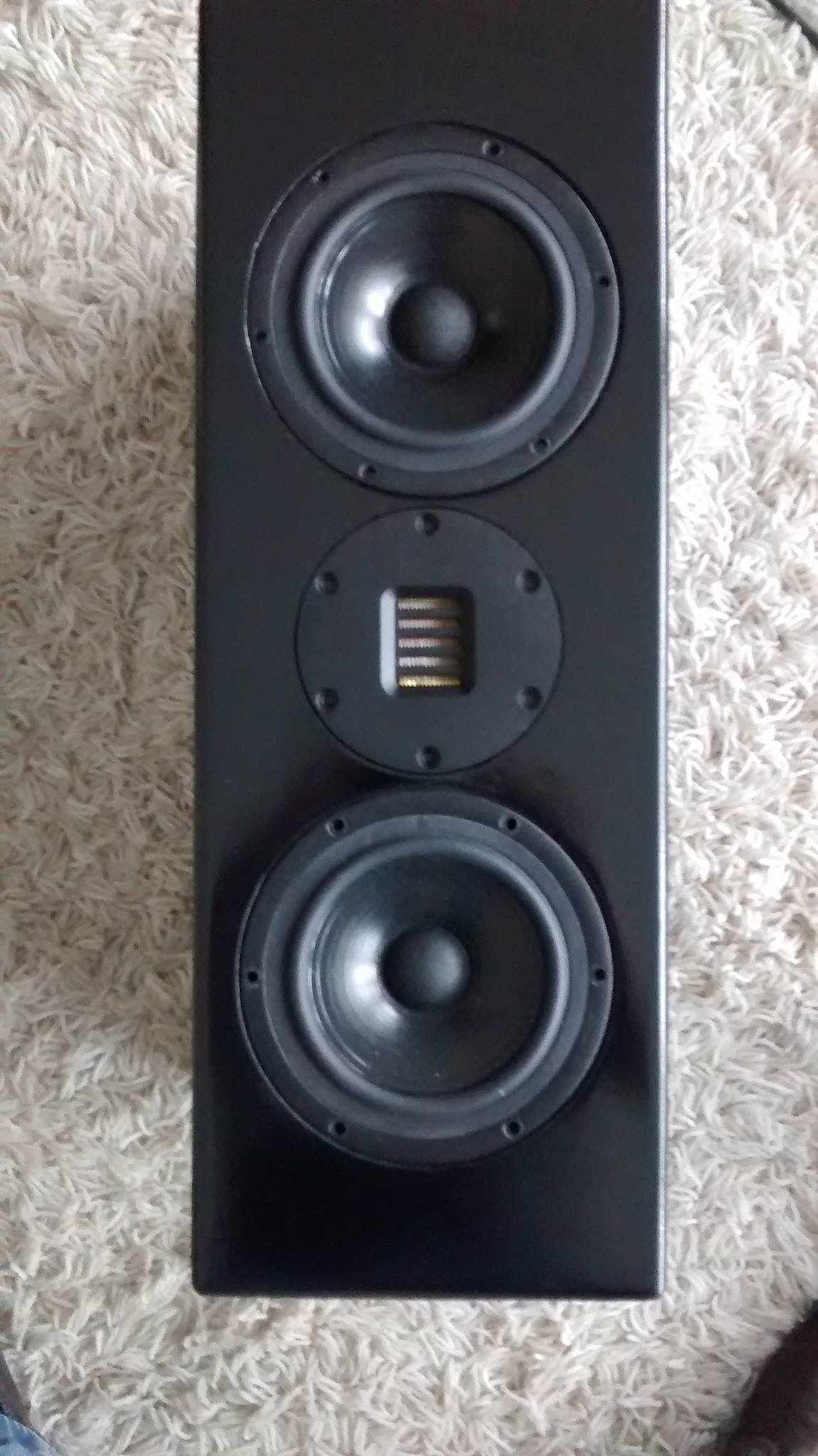
http://www.diyaudio.com/forums/multi-way/289344-seas-ca15rly-x2-cabinet-volume-suggestions-6.html
Troels Gravesen does an easy MTM here:
Vifa PL14WJ-
Now, actually, he uses a very familiar design of 2nd order bass at 4 ohms, which is always near 1mH with 8-12uF shunt, and a third order tweeter. The second to fourth images are the SEAS CA15RLY idea we tried with a ribbon tweeter. The main thing is to have the right idea.
In practise, when you include the (0.3mH for parallel drivers, it would be 0.6mH for a single one) voicecoil inductance, the bass is the familiar 3rd order in 3:1 ratio, which lies deep in the maths of filtering. As is the tweeter filter at 1:3. This ends up an order higher than Lynn Olson's design on bass and treble. In practise, a filter has an impedance, and at 4 ohms, the capacitors get bigger, and the coils smaller than with 8 ohms. But they are otherwise the same idea.
The slopes are not entirely symmetrical to allow for very slight time alignment issues between the drivers, and keep phase aligned. An old trick.
BTW, you will notice the electrical response is steeper than than the mechanical response here. That is the bafflestep allowance for the box, which is needed unless you wall mount. In the real world with a cabinet the lower bass sort of disappears round the back of the baffle by 6dB (which is quarter power), whereas the mids go forward to you. If you want to appear wiser than you really mostly are, you might waffle about 2Pi space and 4Pi space and diffraction. Which always loses noobies completely.
Attachments
Last edited:
Can't get better advice than that on "modernizing?" this stellar design
Which raises the question - Lynn, for those of us with less time to wade through the noise of thousands of forum posts, could you share your opinion on the latest generations of very affordable DSP based crossover approaches? I almost said "solutions", but that might seem leading.
Which raises the question - Lynn, for those of us with less time to wade through the noise of thousands of forum posts, could you share your opinion on the latest generations of very affordable DSP based crossover approaches? I almost said "solutions", but that might seem leading.
- Status
- This old topic is closed. If you want to reopen this topic, contact a moderator using the "Report Post" button.
- Home
- Loudspeakers
- Multi-Way
- Four Vifa p13wh00-08s and two Scan Speak d2905-950000
